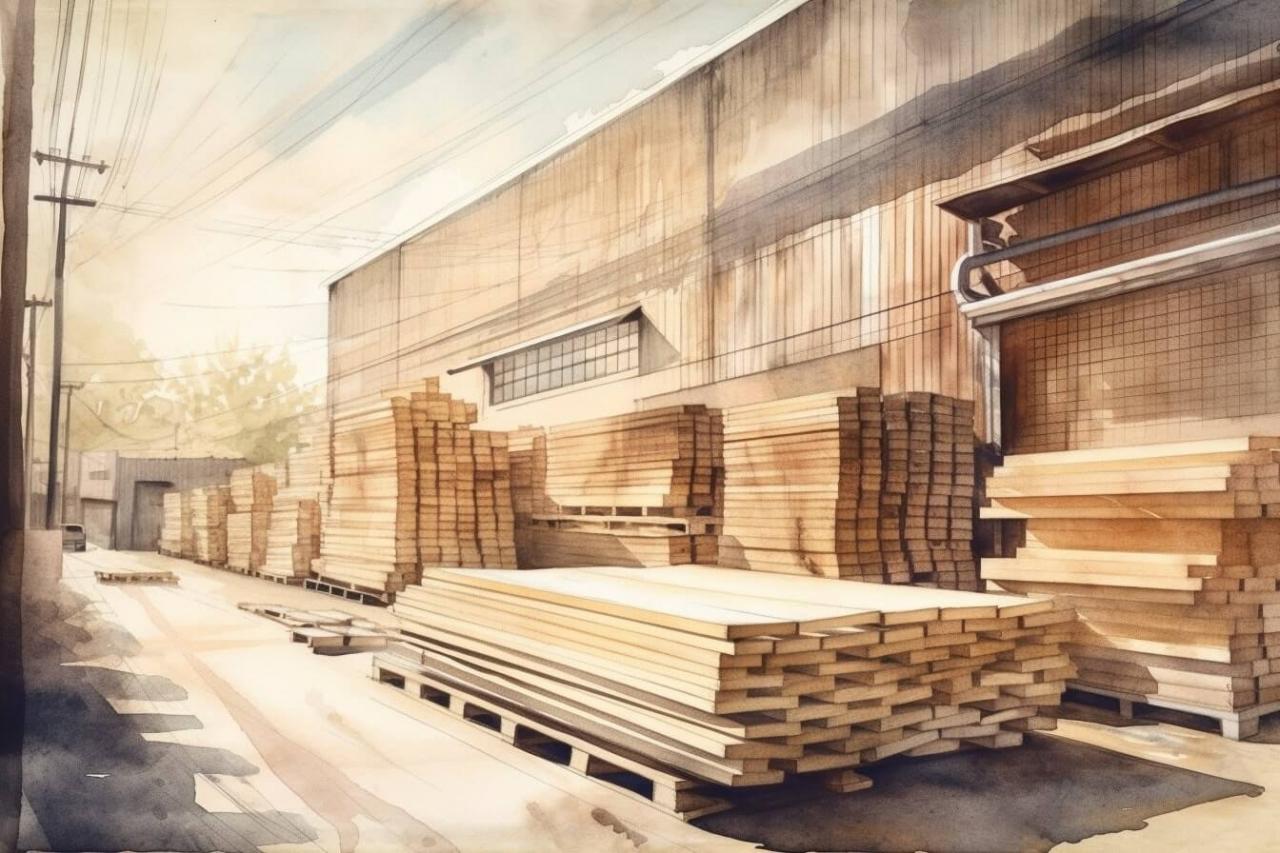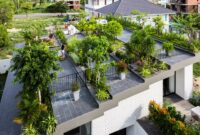Sustainable home materials and finishes are gaining popularity as homeowners prioritize eco-friendly living. This guide explores the environmental impact of various building materials, from the sourcing and transportation to their end-of-life considerations. We’ll delve into the benefits of low-VOC paints, the lifecycle assessment of different materials, and the long-term cost-effectiveness of sustainable choices, ultimately showing how you can build a greener, healthier home.
Choosing sustainable materials isn’t just about protecting the planet; it also impacts indoor air quality and the overall health of your family. We’ll examine the advantages of natural finishes, compare the embodied carbon of locally sourced versus imported materials, and discuss how smart design choices can further minimize environmental impact. This guide provides a comprehensive overview, empowering you to make informed decisions throughout your building or renovation project.
Defining Sustainable Home Materials
Choosing sustainable building materials is crucial for minimizing the environmental impact of construction and promoting healthier living spaces. Sustainability in this context goes beyond simply using “eco-friendly” products; it involves a holistic assessment of a material’s entire lifecycle, from extraction and manufacturing to its eventual disposal or reuse.Sustainable building materials are those that minimize environmental damage throughout their lifecycle.
Key criteria include reduced greenhouse gas emissions during production and transportation, responsible sourcing of raw materials (avoiding deforestation or depletion of finite resources), low embodied energy (the total energy required to produce and transport the material), durability and longevity to reduce replacement needs, and recyclability or biodegradability at the end of the material’s life. Materials should also be non-toxic and safe for occupants and the environment.
Examples of Sustainable and Unsustainable Materials
Sustainable materials often prioritize renewable resources and minimize waste. Examples include bamboo (a rapidly renewable resource with high strength), reclaimed wood (reducing landfill waste and embodied energy), recycled steel (conserving resources and reducing emissions), and sustainably harvested timber certified by organizations like the Forest Stewardship Council (FSC). Unsustainable materials, on the other hand, often involve high embodied energy, resource depletion, and toxic emissions.
These include materials like concrete (with its high carbon footprint from cement production), certain types of plastics (often derived from fossil fuels and difficult to recycle), and some chemically treated wood products that release harmful volatile organic compounds (VOCs).
Environmental Impact of Different Woods
The environmental impact of wood used in construction varies significantly depending on the species, sourcing practices, and forestry management. Rapidly renewable species like bamboo have a much lower environmental impact compared to slow-growing hardwoods that require extensive time for regrowth. Unsustainable logging practices contribute to deforestation, habitat loss, and carbon emissions. Conversely, sustainably managed forests can act as significant carbon sinks, absorbing atmospheric CO The choice of wood significantly affects carbon sequestration – the process of capturing and storing atmospheric carbon dioxide in trees and other organic matter.
Over-harvesting leads to a net release of carbon, whereas responsible forestry helps maintain or even increase carbon storage. The following table illustrates this:
| Material | Source | Environmental Impact | Cost |
|---|---|---|---|
| Bamboo | Rapidly renewable plantations | Low carbon footprint, minimal deforestation | Relatively low |
| FSC-Certified Hardwood | Sustainably managed forests | Moderate carbon footprint, responsible sourcing | Moderate to high |
| Untreated Softwood (e.g., Pine) | Managed forests (varied sustainability levels) | Variable carbon footprint, potential for deforestation if unsustainably sourced | Low to moderate |
| Illegally Harvested Hardwood | Deforested areas | High carbon footprint, significant deforestation, habitat loss, and biodiversity reduction | Potentially low (due to illegal activities), but with high social and environmental costs |
Sustainable Finishes and Coatings: Sustainable Home Materials And Finishes

Source: ugreen.io
Choosing sustainable finishes and coatings for your home is a crucial step towards creating a healthier and more environmentally friendly living space. Beyond aesthetics, these materials significantly impact indoor air quality and the overall environmental footprint of your home. Understanding the properties and implications of different options is key to making informed decisions.
Volatile Organic Compounds (VOCs) in Paints and Finishes: Health Implications
Volatile organic compounds (VOCs) are chemicals that easily evaporate at room temperature, releasing gases that can contaminate indoor air. Many conventional paints and finishes contain high levels of VOCs, which can cause a range of health problems, from eye, nose, and throat irritation to headaches, dizziness, and nausea. Long-term exposure to high VOC levels has been linked to more serious health concerns, including respiratory issues, liver and kidney damage, and even some types of cancer.
Children and individuals with pre-existing respiratory conditions are particularly vulnerable to the adverse effects of VOCs. Minimizing VOC exposure within the home is therefore a significant factor in promoting a healthy living environment.
Low-VOC and Zero-VOC Paints and Sealants
Fortunately, numerous low-VOC and zero-VOC alternatives are now available for both interior and exterior applications. Many manufacturers offer water-based paints that significantly reduce or eliminate VOC emissions. For example, brands like Benjamin Moore’s Natura and Sherwin-Williams’ Harmony are well-known for their low-VOC formulations. In the sealant category, options such as linseed oil-based sealants and natural beeswax-based finishes offer a more environmentally friendly approach compared to traditional solvent-based sealants.
These products often have a lower environmental impact due to their bio-based nature and reduced VOC emissions. It is crucial to always check product labels and safety data sheets (SDS) to verify VOC content before purchase and application.
Sustainable home materials and finishes contribute to a healthier living environment, and this extends to your lighting choices. For example, efficient LED smart bulbs are a great eco-friendly option, but knowing the best practices for maintaining and troubleshooting smart home lighting systems is key to maximizing their lifespan and minimizing waste. Proper maintenance ensures these sustainable lighting solutions continue to shine brightly and efficiently, further enhancing your home’s eco-friendly profile.
Durability and Maintenance of Natural and Sustainable Finishes
Natural and sustainable finishes often require different maintenance strategies compared to their conventional counterparts. While some might require more frequent reapplication, many offer unique benefits like breathability and enhanced durability in specific conditions. For instance, natural oil finishes may require more frequent oiling to maintain their protective layer, while a well-applied limewash can offer exceptional durability and resistance to moisture.
The longevity of these finishes is also dependent on factors like application technique, the surface being treated, and the environmental conditions. Understanding these specific requirements is key to ensuring the long-term performance and aesthetic appeal of your sustainable finish choices.
Comparison of Sustainable Finish Options
Choosing the right sustainable finish depends heavily on the specific application and desired properties. The following table compares five popular options:
| Finish Type | Durability | Maintenance | VOC Level | Suitability |
|---|---|---|---|---|
| Linseed Oil | Moderate; requires regular reapplication | Regular oiling | Low | Wood furniture, floors |
| Beeswax | Moderate; susceptible to water damage | Periodic buffing | Very Low | Wood furniture, cutting boards |
| Limewash | High; resistant to moisture | Minimal; occasional cleaning | Low | Walls, plaster |
| Milk Paint | Moderate; can be sensitive to abrasion | Minimal; occasional touch-ups | Low | Furniture, walls |
| Water-Based Acrylic Paint (Low-VOC) | High; durable and washable | Easy cleaning | Low | Walls, trim, furniture |
Sourcing and Transportation of Materials

Source: ugreen.io
Choosing sustainable building materials involves careful consideration of their origin and journey to the construction site. The environmental impact extends far beyond the material itself; sourcing and transportation play crucial roles in determining a building’s overall sustainability. Minimizing the environmental footprint of these processes is key to achieving truly sustainable construction.Sourcing sustainable materials presents a complex trade-off between local and global options.
Sustainable home materials and finishes are a key part of eco-conscious living, minimizing environmental impact throughout a home’s lifecycle. However, integrating smart technology can further enhance sustainability; for example, you can optimize energy use with systems like those described in this article on Smart home automation for modern living. Ultimately, combining sustainable materials with smart home technology creates a truly efficient and environmentally responsible home.
Each approach presents unique challenges and benefits impacting the environmental and economic aspects of the project.
Challenges of Local versus Global Sourcing
Local sourcing offers several advantages, including reduced transportation emissions and support for local economies. However, the availability of sustainable materials locally might be limited, potentially leading to higher costs or compromises on material performance. Conversely, global sourcing can provide access to a wider variety of sustainable materials, potentially at lower costs. However, this comes at the expense of increased transportation emissions and a larger carbon footprint, along with potential ethical concerns regarding labor practices and resource extraction in the origin country.
For example, sourcing rapidly renewable bamboo flooring locally might be more expensive than importing sustainably harvested hardwood from overseas, but the local option drastically reduces the carbon footprint associated with transportation. The decision requires careful weighing of these competing factors.
Transportation’s Impact on Environmental Footprint
Transportation methods significantly influence the embodied carbon of building materials. The distance materials travel, the mode of transport (truck, ship, rail), and the efficiency of the transport system all contribute to the overall environmental impact. Heavier materials transported over longer distances naturally increase the carbon footprint.
Carbon Footprint of Material Transportation: A Visual Representation, Sustainable home materials and finishes
Imagine three concentric circles representing increasing transportation distances:* Inner Circle (Local): Represents materials sourced within a 50-mile radius. This is depicted as a small, dark green circle, symbolizing a low carbon footprint due to short transport distances, potentially using electric vehicles or bicycle transport.* Middle Circle (Regional): Represents materials sourced within a 500-mile radius. This is a larger, lighter green circle, indicating a moderate carbon footprint, potentially involving truck transport.* Outer Circle (Global): Represents materials sourced internationally, potentially thousands of miles away.
This is the largest circle, light grey in color, signifying a significantly higher carbon footprint due to long-distance shipping, often involving large cargo ships.The relative size of the circles visually demonstrates the increasing carbon footprint with increasing transportation distance. The color gradient further emphasizes the environmental impact, ranging from low (dark green) to high (light grey).
Embodied Carbon Comparison: Local vs. Long-Distance Sourcing
A comparative analysis of embodied carbon reveals a clear advantage for locally sourced materials. For instance, the embodied carbon of locally sourced timber, transported by truck within a 100-mile radius, is significantly lower than that of imported timber from another continent, shipped across oceans. While the exact figures vary based on material type, transport mode, and distance, the general trend remains consistent: shorter transport distances translate to lower embodied carbon.
This difference is amplified when considering the carbon emissions associated with manufacturing, packaging, and distribution at each stage of the supply chain. For example, studies have shown that locally sourced concrete can have a 30-50% lower carbon footprint compared to imported concrete due to significantly reduced transportation emissions.
Lifecycle Assessment of Materials
Understanding the full environmental impact of building materials is crucial for sustainable construction. A lifecycle assessment (LCA) provides a comprehensive evaluation of a material’s environmental footprint, from its extraction and processing to its eventual disposal or recycling. This holistic approach allows for informed decision-making, enabling the selection of materials that minimize their overall environmental burden.
Stages of a Lifecycle Assessment
A complete LCA typically involves several key stages. First, the raw material extraction phase considers the environmental impact of mining, quarrying, or harvesting. This includes energy consumption, waste generation, and habitat disruption. Next, material manufacturing encompasses processing, transportation, and the energy used in transforming raw materials into usable building products. Construction and use phases account for the embodied energy and emissions associated with installing and using the material within a building’s lifespan.
Finally, the end-of-life stage assesses the environmental impacts of demolition, waste management, recycling, or disposal. Each stage is carefully analyzed to quantify its contribution to the overall environmental impact.
Materials with High Embodied Energy and Lower-Impact Alternatives
Certain materials possess significantly high embodied energy—the total energy required to extract, process, manufacture, transport, and install them. For example, aluminum requires a substantial amount of energy to produce due to its electrolytic refining process. Steel production, while less energy-intensive than aluminum, still contributes significantly to carbon emissions due to the high temperatures required in its manufacture. Concrete, a widely used construction material, also has a high embodied energy due to cement production, a process that releases considerable amounts of carbon dioxide.
Sustainable alternatives with lower embodied energy include: using recycled aluminum or steel, employing alternative cements like geopolymer cement (which uses industrial byproducts and requires less energy to produce), and incorporating recycled aggregates into concrete mixes. Timber, especially sustainably sourced wood, also offers a relatively low embodied energy compared to many other materials.
Recyclability and End-of-Life Options for Building Materials
The recyclability and end-of-life options for building materials significantly influence their overall environmental impact. The following table compares several materials:
| Material | Recyclability | End-of-Life Options | Environmental Impact at End-of-Life |
|---|---|---|---|
| Steel | High (easily recycled and reused multiple times) | Recycling, reuse in new construction | Low if recycled; significant if landfilled |
| Aluminum | High (infinitely recyclable) | Recycling, reuse in new construction | Low if recycled; significant if landfilled |
| Concrete | Moderate (recycled aggregates can be used in new concrete) | Recycling (aggregates), landfill | Moderate if recycled; high if landfilled (due to volume and potential leaching) |
| Wood (sustainably sourced) | Moderate (can be reused, recycled into composite materials, or used for energy) | Reuse, recycling, biomass energy | Low if reused or recycled; relatively low if used for biomass energy |
| Gypsum board (drywall) | Low (recycling is limited due to contamination) | Landfill, limited recycling programs for gypsum | Moderate (landfill volume) |
| Plastics (PVC) | Low (often not recycled due to difficulties in sorting and processing) | Landfill, incineration | High (persistence in the environment, potential for toxic emissions during incineration) |
Cost-Effectiveness of Sustainable Options
Choosing sustainable building materials often involves a careful consideration of upfront costs versus long-term savings. While initial investments might appear higher compared to conventional options, the overall lifecycle cost can be significantly lower, leading to substantial financial benefits over the building’s lifespan. This section explores the cost-effectiveness of sustainable choices, analyzing initial and long-term expenses and presenting real-world examples.Sustainable building materials frequently offer superior durability and longevity, reducing the need for frequent repairs and replacements.
Sustainable home materials and finishes are increasingly important for eco-conscious homeowners. Choosing these materials is a key element of modern design, and you can find tons of inspiration by checking out the latest trends in Best modern home design ideas 2025. Ultimately, incorporating sustainable choices creates beautiful, healthy, and environmentally responsible homes.
This translates to lower maintenance costs over time. Furthermore, energy-efficient materials and designs can significantly lower utility bills, resulting in considerable savings on heating, cooling, and electricity consumption. These long-term savings can often outweigh the higher initial investment.
Financial Benefits of Sustainable Building Practices
Several case studies illustrate the financial advantages of sustainable building. For example, a study conducted by the Green Building Initiative found that green buildings, on average, experience a 20% reduction in operating costs compared to conventional buildings. This reduction stems from lower energy consumption, reduced water usage, and less frequent maintenance. Another example comes from the LEED (Leadership in Energy and Environmental Design) certification program.
Buildings achieving LEED certification often command higher rental rates and property values, increasing their return on investment. These higher values reflect the market’s recognition of the long-term benefits associated with sustainable construction.
Cost Comparison of Sustainable and Conventional Materials
The following table compares the initial and long-term costs of three common sustainable and three conventional building materials. These figures are estimates and can vary based on location, material quality, and installation costs. It’s crucial to obtain accurate quotes from local suppliers for specific projects.
| Material | Initial Cost | Long-Term Maintenance Cost (per 10 years) | Overall Cost (10 years) |
|---|---|---|---|
| Reclaimed Wood Flooring | $15/sq ft | $2/sq ft | $17/sq ft |
| Bamboo Flooring | $12/sq ft | $1/sq ft | $13/sq ft |
| Recycled Content Insulation | $2/sq ft | $0.5/sq ft | $2.5/sq ft |
| Traditional Hardwood Flooring | $10/sq ft | $5/sq ft | $15/sq ft |
| Standard Insulation | $1.5/sq ft | $2/sq ft | $3.5/sq ft |
| Vinyl Flooring | $5/sq ft | $3/sq ft | $8/sq ft |
Design Considerations for Sustainable Homes
Building design plays a pivotal role in creating truly sustainable homes. By carefully considering the building’s form, orientation, and materials, we can significantly reduce both the environmental impact of construction and the ongoing energy consumption of the dwelling. A well-designed sustainable home minimizes material use, maximizes energy efficiency, and creates a comfortable and healthy living environment with minimal reliance on energy-intensive systems.Effective design strategies are crucial for minimizing the need for energy-intensive materials and systems in a sustainable home.
Passive design principles, which harness natural resources like sunlight, wind, and thermal mass, are central to this approach. By strategically orienting the building, incorporating thermal mass, and employing shading devices, we can significantly reduce the need for heating, cooling, and lighting, thus lessening the demand for energy-intensive materials and mechanical systems.
Passive Design Strategies in Sustainable Homes
Passive design focuses on using the natural environment to regulate the temperature and lighting within a building. This reduces reliance on mechanical systems, which often consume considerable energy and are made from energy-intensive materials. Examples include optimizing building orientation to maximize solar gain in winter and minimize it in summer, using thermal mass materials (like concrete or brick) to store and release heat, and incorporating natural ventilation strategies to reduce the need for air conditioning.
Proper insulation, strategically placed windows, and overhangs further enhance passive design effectiveness.
Sustainable home materials and finishes are becoming increasingly popular, offering both environmental benefits and a stylish aesthetic. Finding options that don’t break the bank is key, and that’s where exploring options like those found in Affordable contemporary home design comes in handy. Ultimately, smart choices in sustainable materials can contribute significantly to a beautiful and eco-conscious home.
Examples of Sustainable Architectural Designs
Several architectural designs showcase the effective integration of sustainable materials and waste minimization.
The Earthship Biotecture
Earthships, pioneered by Michael Reynolds, are off-grid homes built using recycled materials. The design incorporates tires filled with earth for thermal mass walls, recycled bottles for glazing, and rainwater harvesting systems. The buildings are self-sufficient, requiring minimal energy input, and demonstrate a remarkable commitment to resource reuse and waste reduction. Imagine a home where the walls are made from stacked, earth-filled tires, providing exceptional insulation and thermal mass.
The south-facing windows are strategically placed to maximize solar gain in winter, while overhangs provide shade in summer, minimizing the need for air conditioning. Recycled materials are used extensively throughout the structure, showcasing a circular economy approach to construction.
Passive House Design
Passive House buildings are designed to achieve extremely high levels of energy efficiency through rigorous design and construction standards. They minimize thermal bridging (heat loss through structural elements), utilize high-performance insulation, and incorporate airtight construction techniques to reduce energy loss. While not solely focused on recycled materials, the emphasis on minimizing energy use reduces the overall environmental impact associated with material production and transportation.
The design often incorporates triple-paned windows, highly insulated walls, and sophisticated ventilation systems with heat recovery to maintain a comfortable interior climate with minimal energy consumption. The reduced energy demand translates to a lower reliance on energy-intensive materials and systems.
Green Building Design incorporating Cross-laminated Timber (CLT)
Cross-laminated timber (CLT) is a sustainable and engineered wood product offering significant advantages in green building. CLT buildings feature prefabricated panels made from layers of lumber laminated together, creating a strong, stable, and sustainable building material. CLT reduces reliance on concrete and steel, lowering embodied carbon and construction waste. The prefabrication process also minimizes on-site waste and construction time.
Imagine a multi-story building constructed with large, prefabricated CLT panels. The panels are precisely engineered and assembled off-site, minimizing on-site waste and construction time. The resulting structure is both strong and sustainable, showcasing the potential of engineered wood products in modern architecture. The use of CLT significantly reduces the carbon footprint compared to traditional concrete and steel structures.
Summary
Building a sustainable home involves a holistic approach, considering every aspect from material selection to design and construction practices. By prioritizing sustainable materials and finishes, homeowners can significantly reduce their environmental footprint, create a healthier living space, and even realize long-term cost savings. This guide has highlighted the key considerations, emphasizing the importance of informed choices for a more responsible and environmentally conscious approach to home building.
Quick FAQs
What are some examples of sustainable wood choices?
Bamboo, reclaimed wood, and sustainably harvested hardwoods like certified FSC wood are excellent options. Avoid tropical hardwoods known for deforestation.
How can I reduce VOCs in my home?
Choose low-VOC or zero-VOC paints, sealants, and adhesives. Proper ventilation during and after application is also crucial.
Are sustainable materials always more expensive?
While the initial cost might be higher in some cases, sustainable materials often offer long-term cost savings through reduced maintenance and increased durability.
What is embodied carbon?
Embodied carbon refers to the greenhouse gas emissions associated with the entire lifecycle of a building material, from extraction to manufacturing and transportation.
How do I find certified sustainable materials?
Look for certifications like Forest Stewardship Council (FSC) for wood, and seek out reputable suppliers who can provide information on the sustainability of their products.



